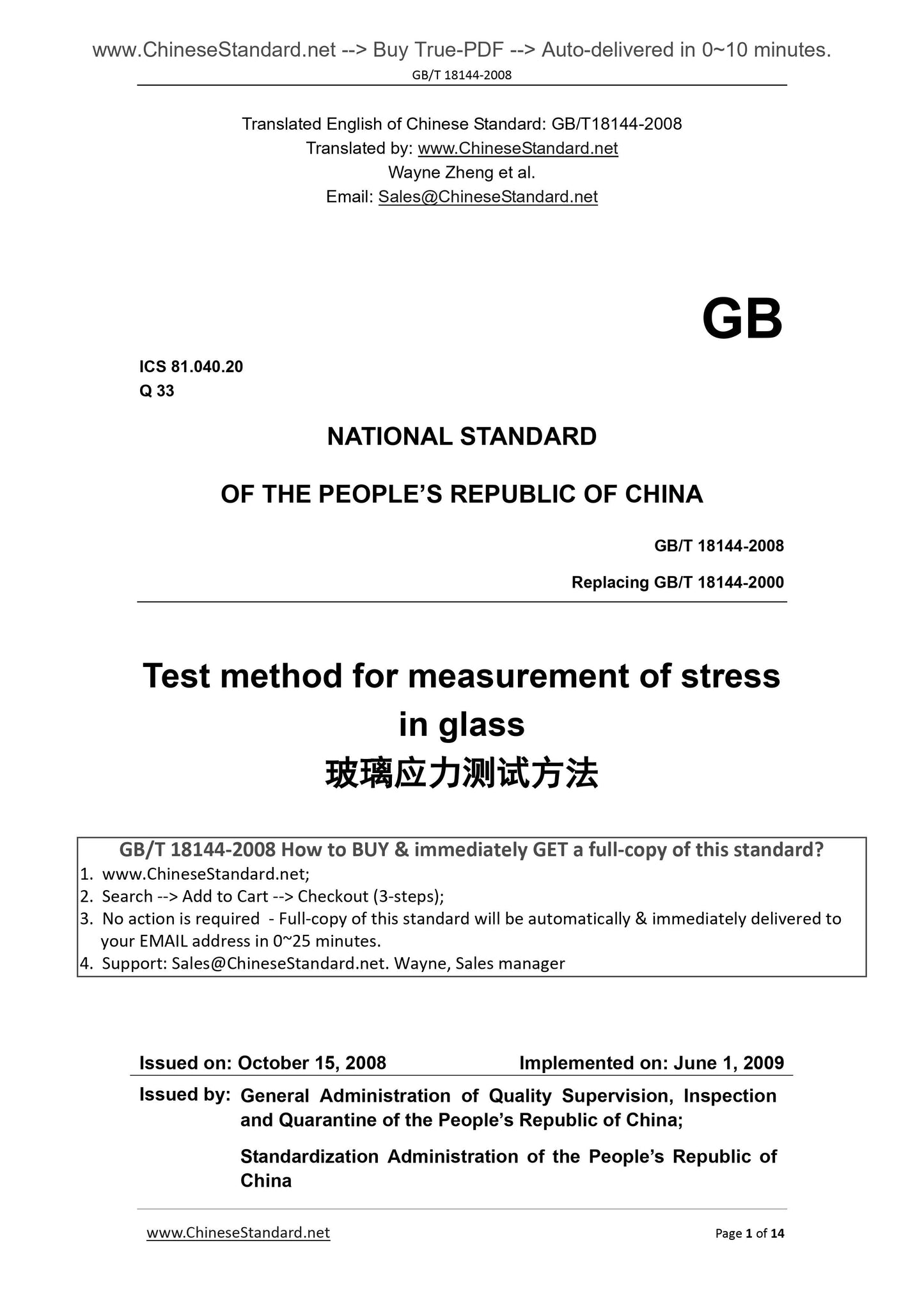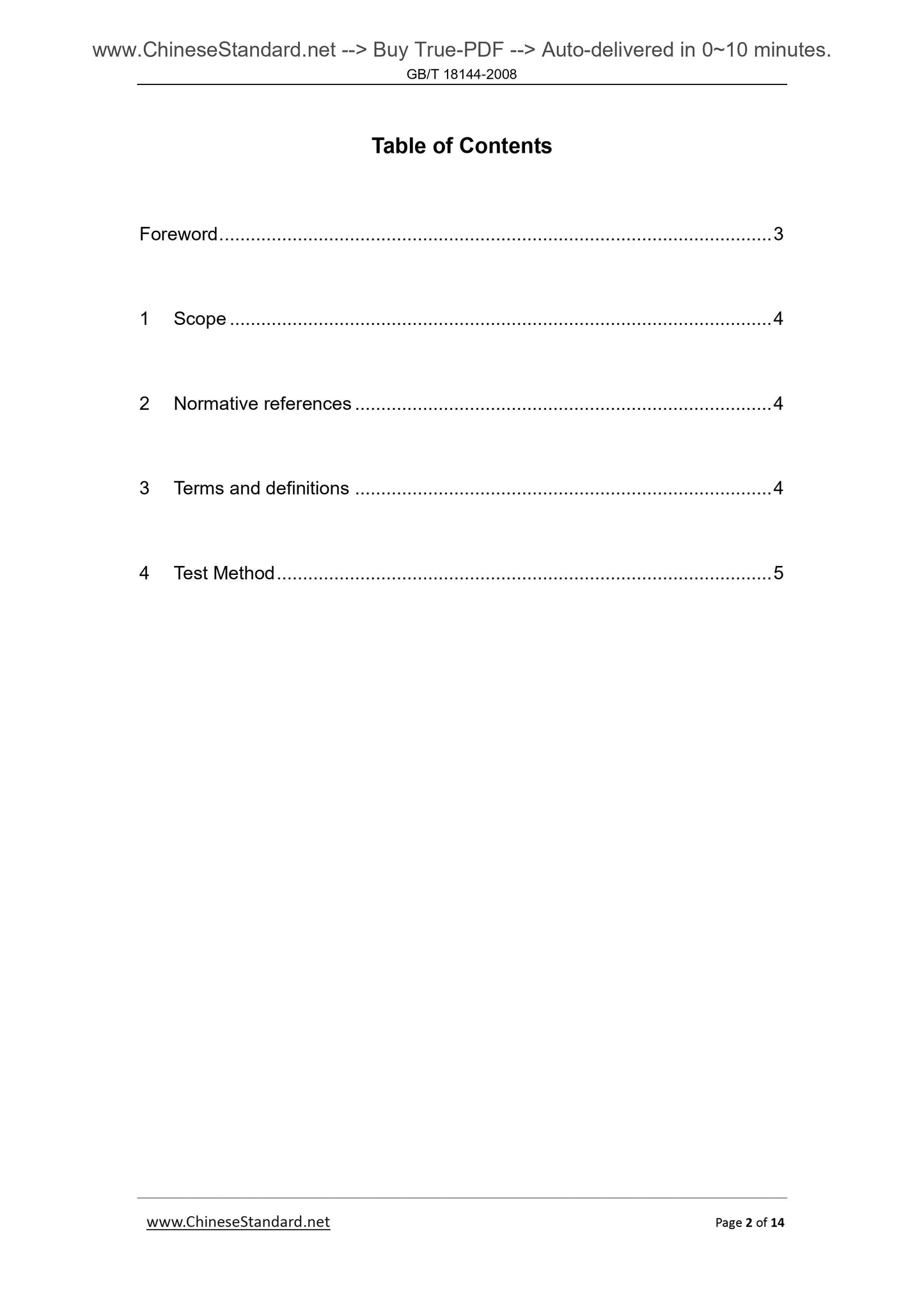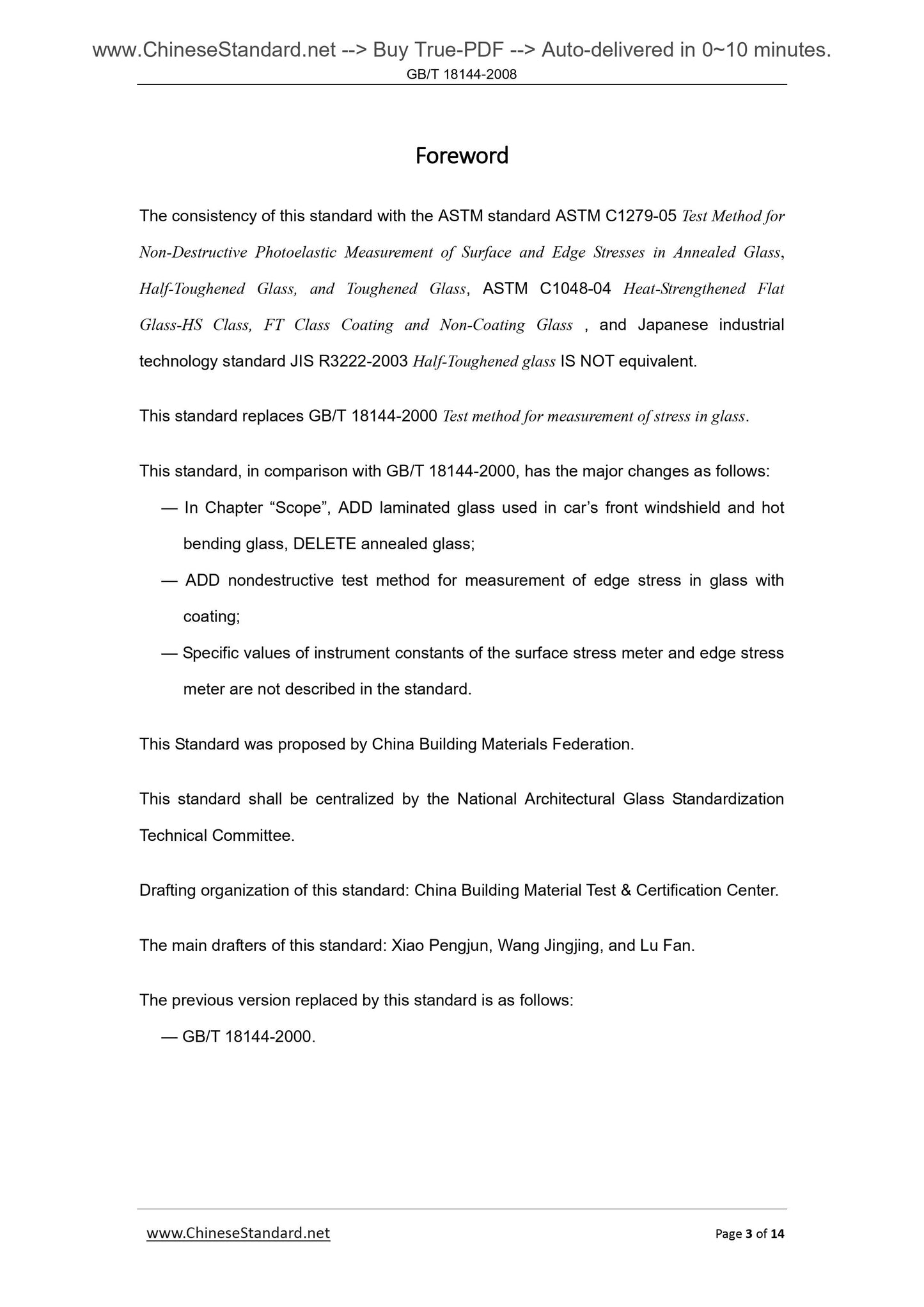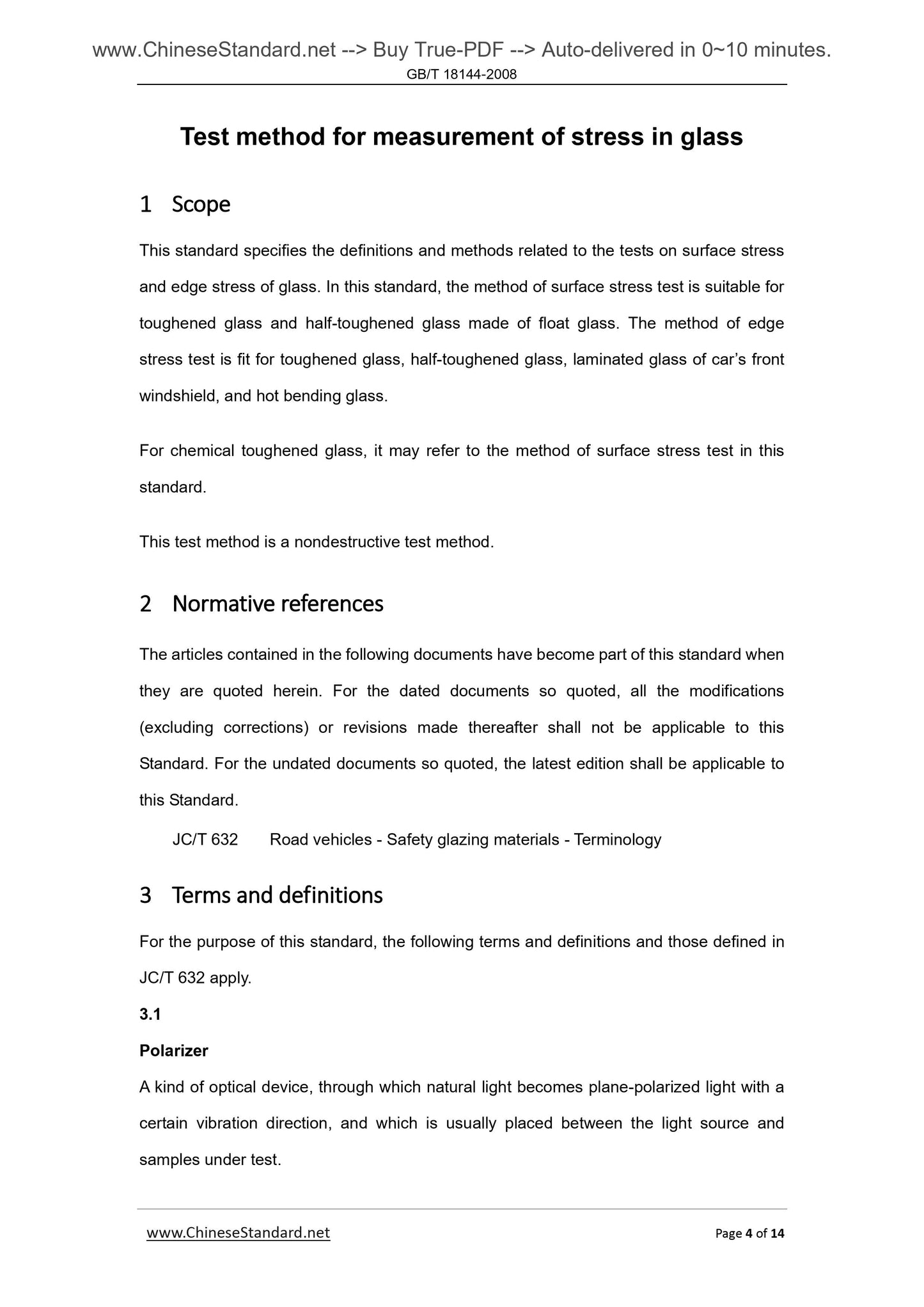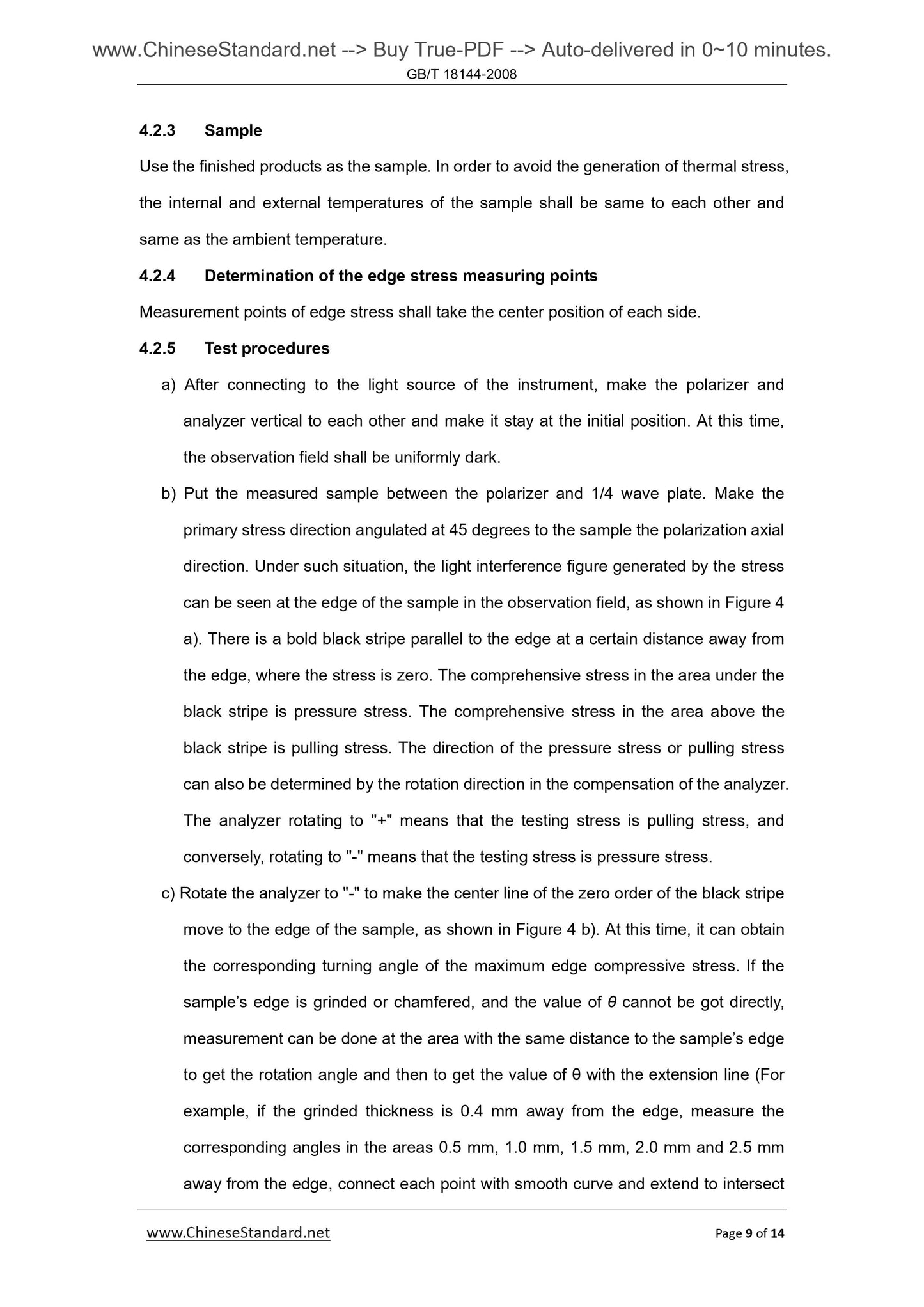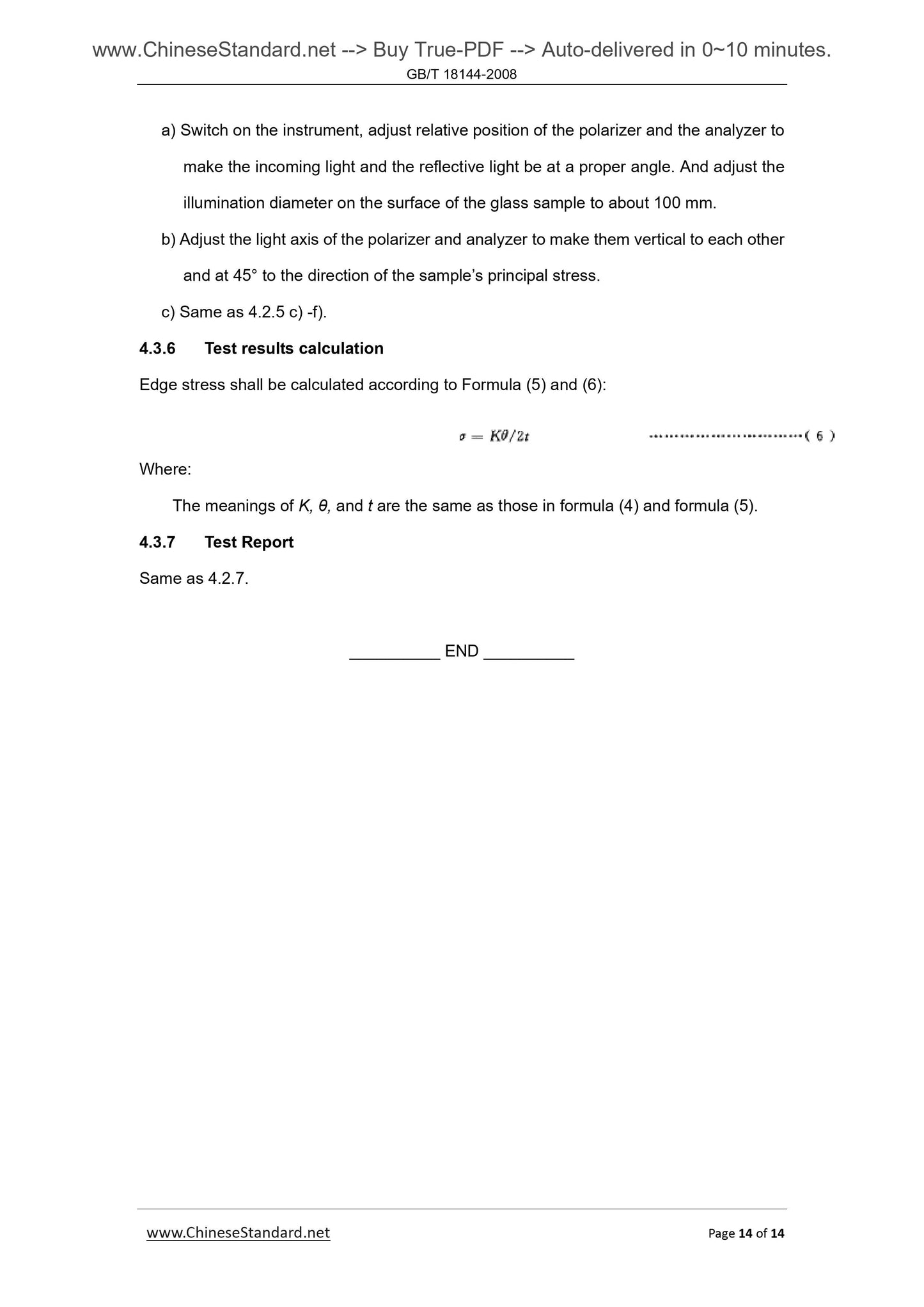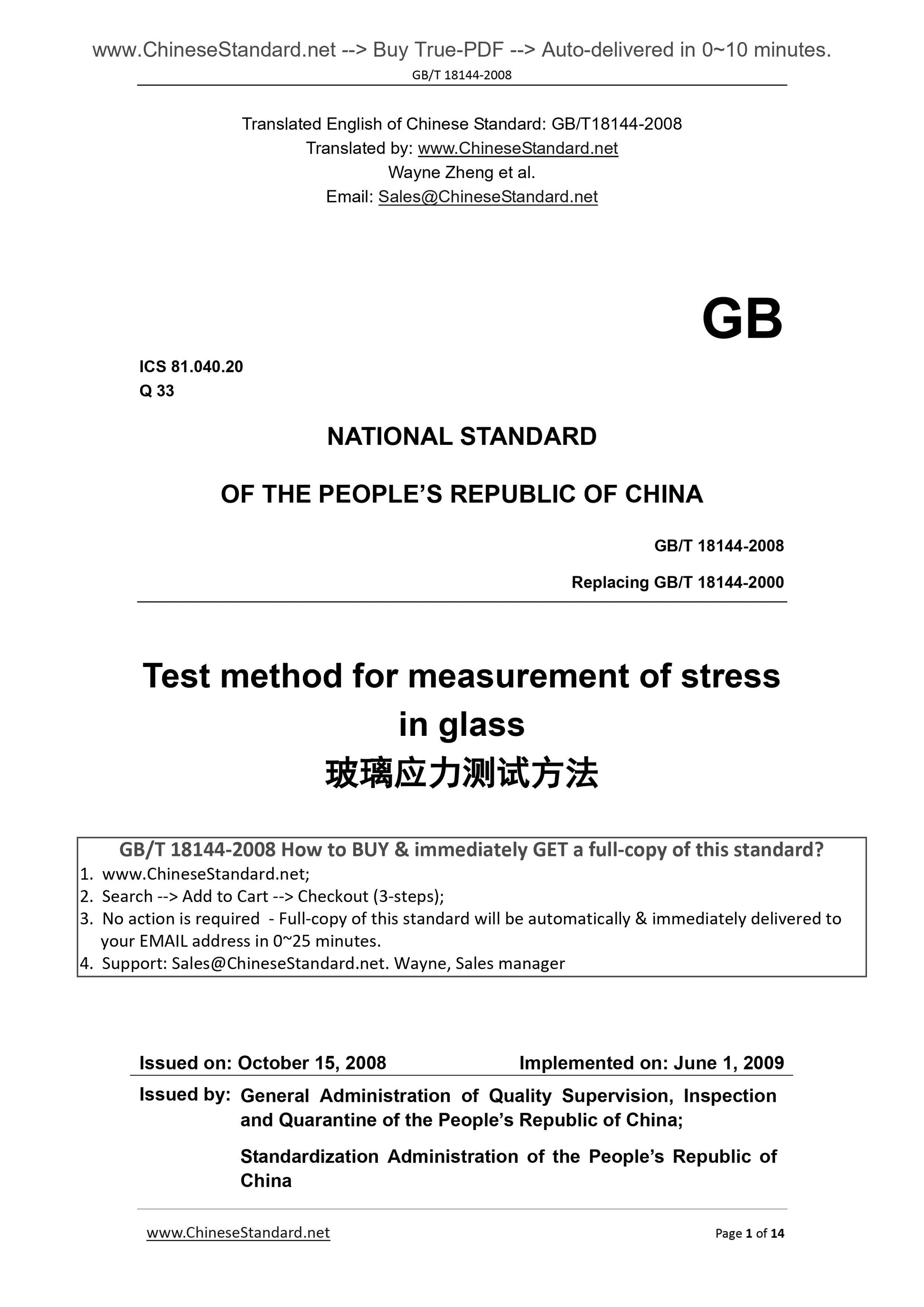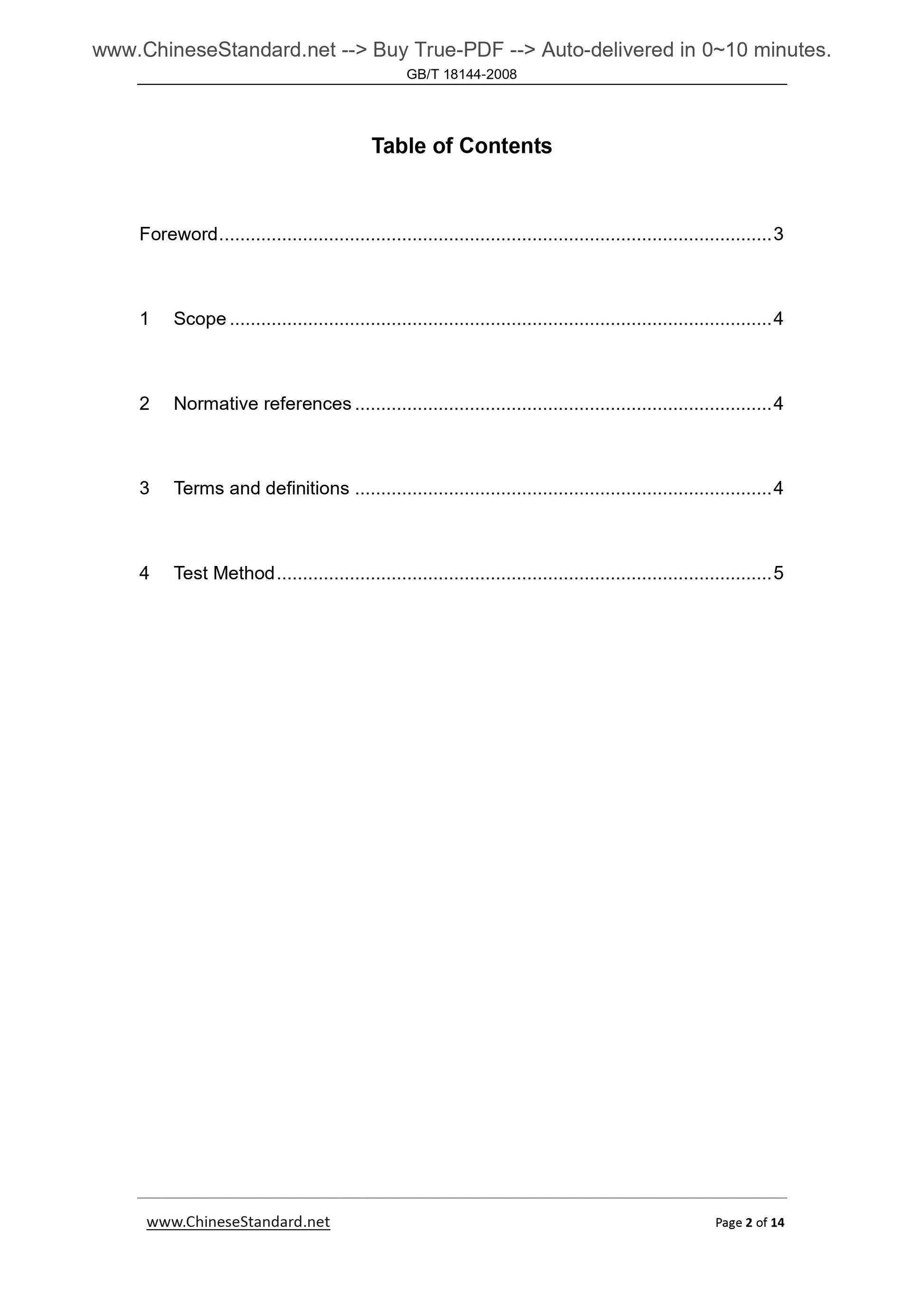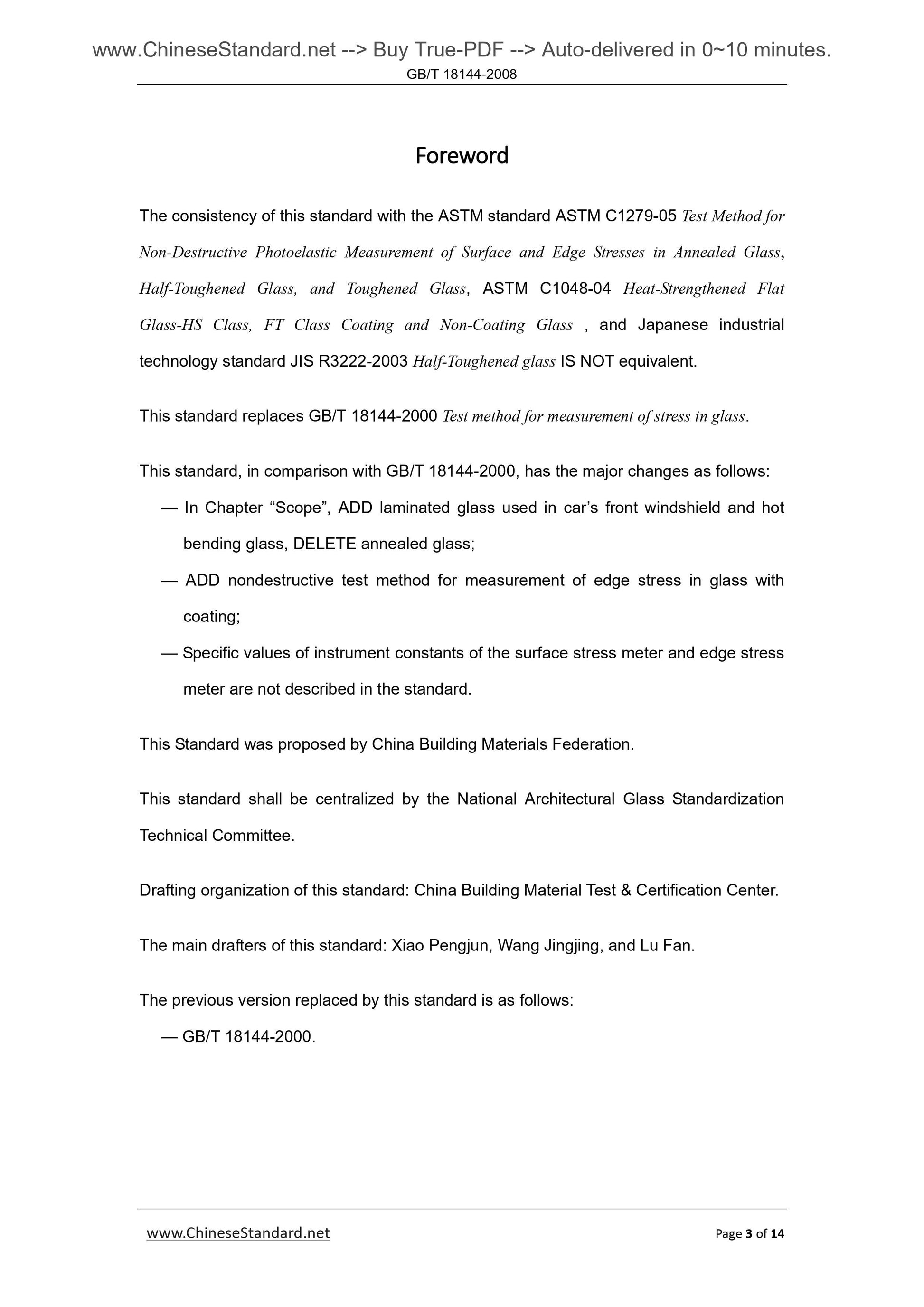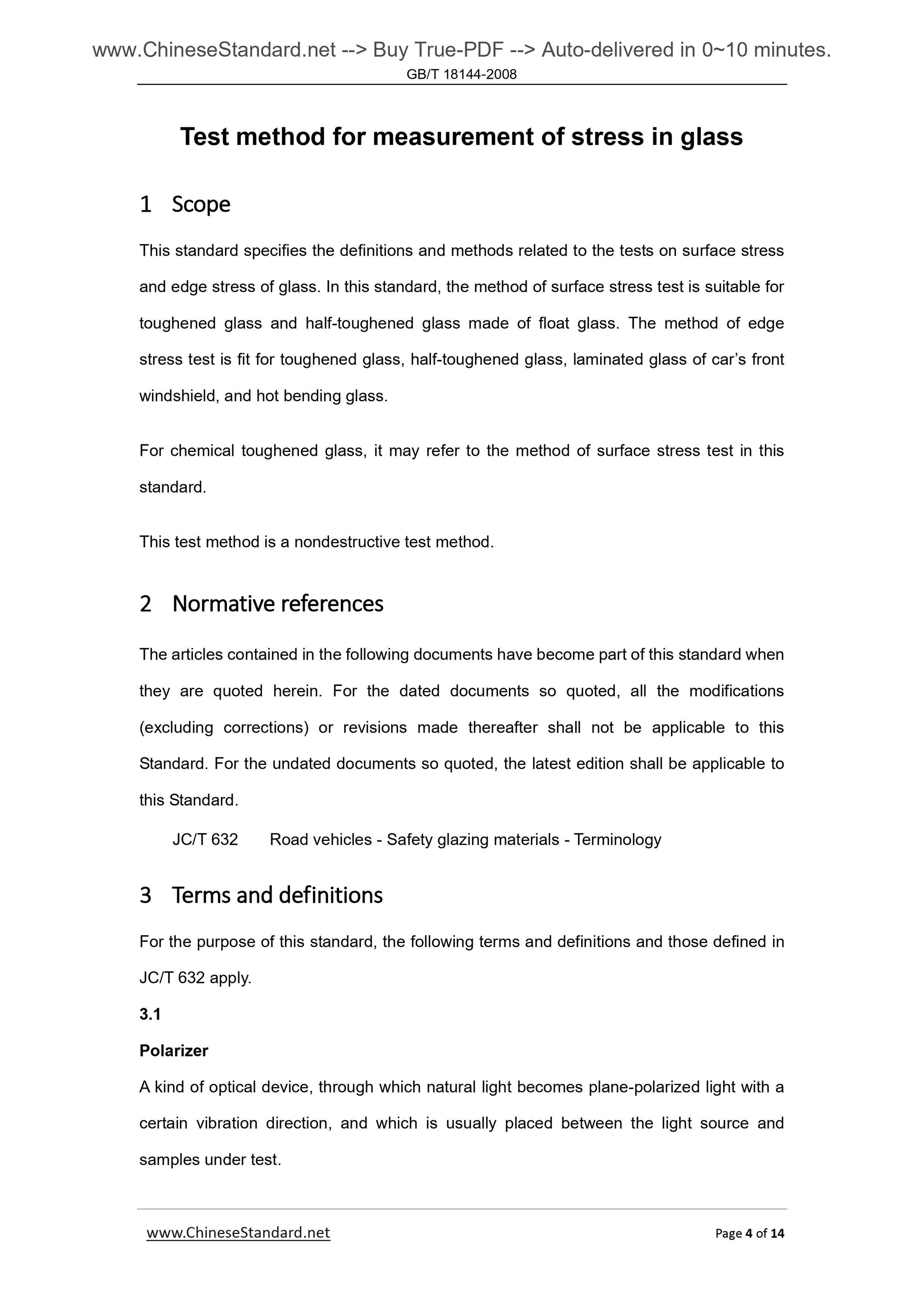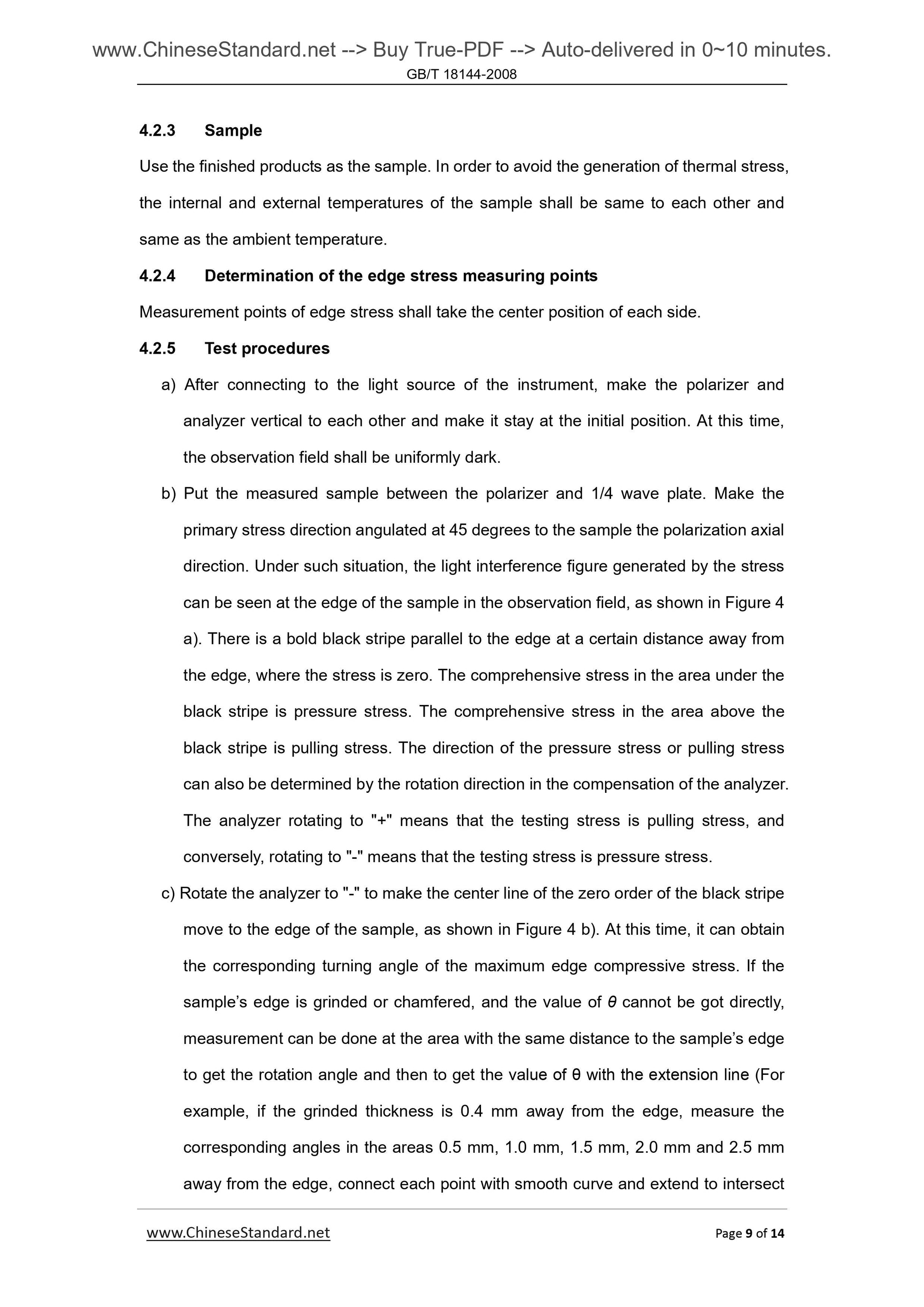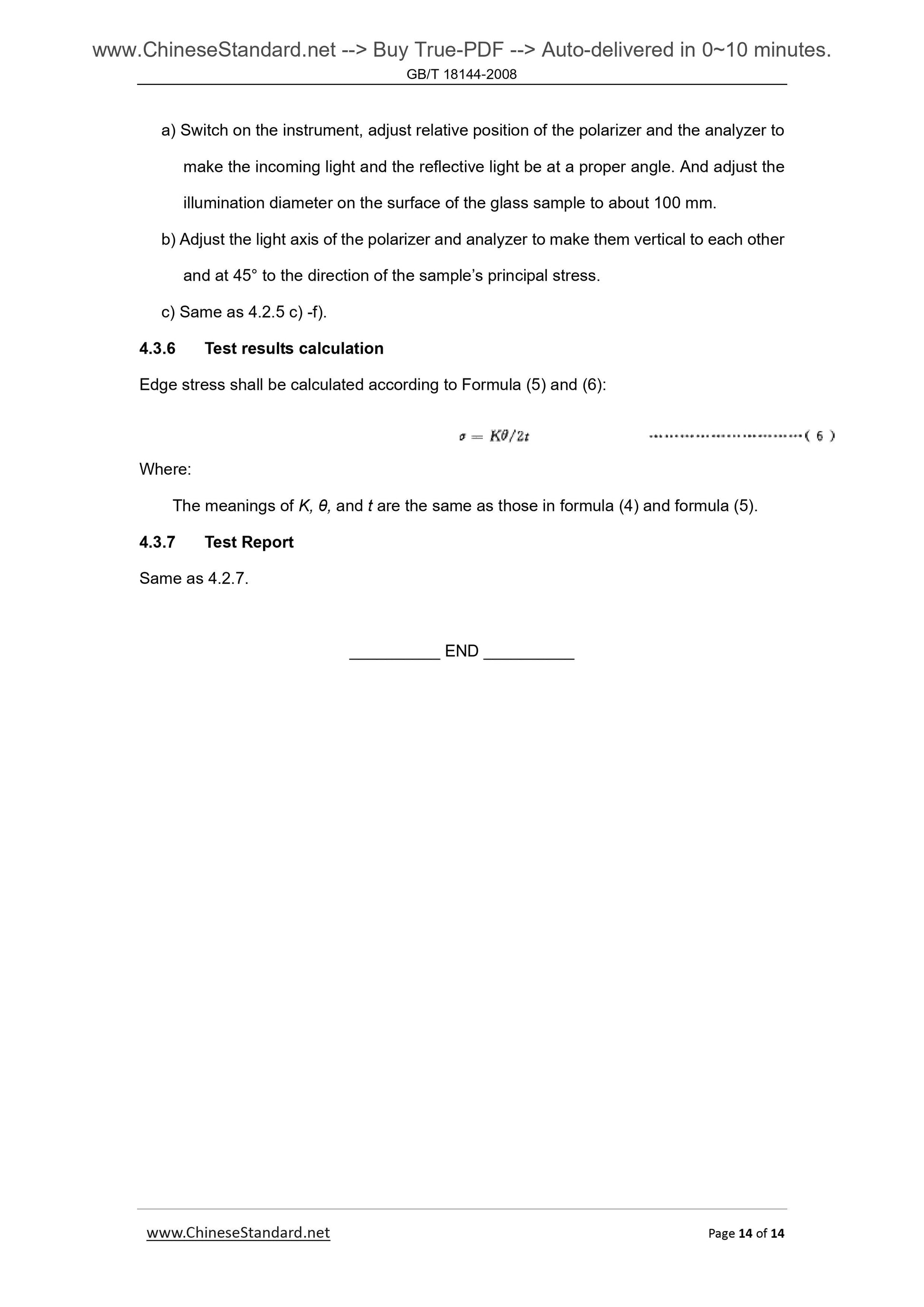1
/
of
6
www.ChineseStandard.us -- Field Test Asia Pte. Ltd.
GB/T 18144-2008 English PDF (GB/T18144-2008)
GB/T 18144-2008 English PDF (GB/T18144-2008)
Regular price
$70.00
Regular price
Sale price
$70.00
Unit price
/
per
Shipping calculated at checkout.
Couldn't load pickup availability
GB/T 18144-2008: Test method for measurement of stress in glass
Delivery: 9 seconds. Download (and Email) true-PDF + Invoice.Get Quotation: Click GB/T 18144-2008 (Self-service in 1-minute)
Newer / historical versions: GB/T 18144-2008
Preview True-PDF
Scope
This standard specifies the definitions and methods related to the tests on surface stressand edge stress of glass. In this standard, the method of surface stress test is suitable for
toughened glass and half-toughened glass made of float glass. The method of edge
stress test is fit for toughened glass, half-toughened glass, laminated glass of car’s front
windshield, and hot bending glass.
For chemical toughened glass, it may refer to the method of surface stress test in this
standard.
This test method is a nondestructive test method.
Basic Data
| Standard ID | GB/T 18144-2008 (GB/T18144-2008) |
| Description (Translated English) | Test method for measurement of stress in glass |
| Sector / Industry | National Standard (Recommended) |
| Classification of Chinese Standard | Q33 |
| Classification of International Standard | 81.040.20 |
| Word Count Estimation | 10,154 |
| Date of Issue | 2008-10-15 |
| Date of Implementation | 2009-06-01 |
| Older Standard (superseded by this standard) | GB/T 18144-2000 |
| Quoted Standard | JC/T 632 |
| Adopted Standard | ASTM C1279-2005, NEQ; ASTM C1048-2004, NEQ; JIS R3222-2003, NEQ |
| Regulation (derived from) | National Standard Approval Announcement 2008 No.17 (Total No.130) |
| Issuing agency(ies) | General Administration of Quality Supervision, Inspection and Quarantine of the People's Republic of China, Standardization Administration of the People's Republic of China |
| Summary | This standard specifies the glass surface stress, relevant definitions and test methods for glass edge stress testing. This standard test method is applicable to surface stress float glass manufacturing tempered glass, semi- tempered glass, edge stress test method applies to glass, semi- tempered glass, former car windscreens with laminated glass, bending glass. Chemically tempered glass can refer to the use of this standard in surface stress testing methods. This test method is non-destructive testing methods of measurement. |
Share
